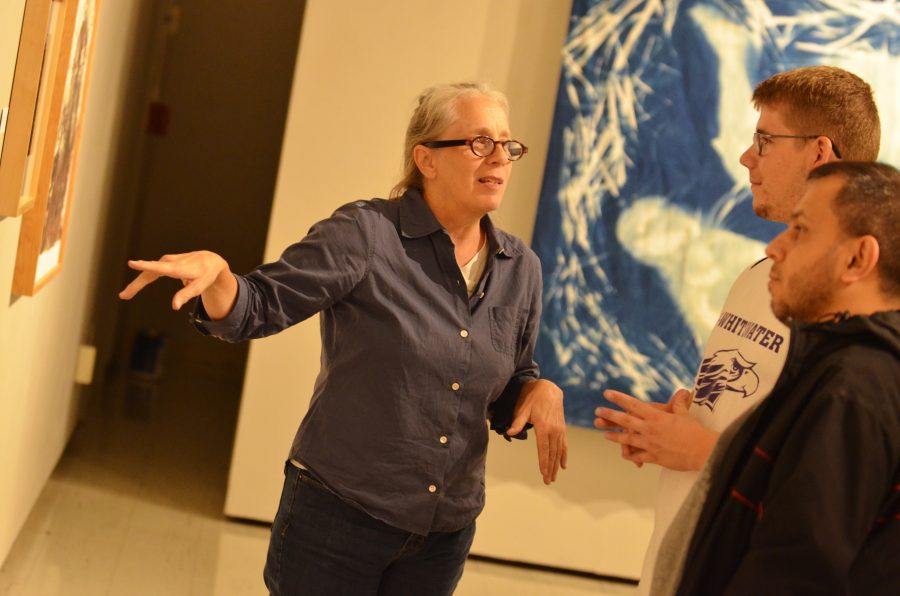By Abrielle Backhaus
Imagine a time where the “traditional” camera didn’t exist. For some this may be the scariest thing since “Insidious.” On Sept. 8, the Crossman Gallery opened an exhibit that focuses on the time before the time of the simple click of a camera to take a visible image.
A majority of today’s Instagram users know great lighting is the difference between a decent selfie and a phenomenal one. In the exhibit “In Light We Trust,” lighting is one of the key components of producing alternative photographs, meaning pinhole camera photographs.
A pinhole camera is a simple camera without a lens and with a single small opening, aperture. In other words it is light-proof box with a small hole in one side. Light from a scene passes through this single point and projects a reversed image on the opposite side of the box.
“Some students, if they’ve taken photography classes in high school, might have made a pin hole camera at some point,” said Crossman Gallery Director Michael Flanagan. “What they probably did was take a shoe box or an oatmeal box and put a piece of photo paper in it, poked a little pinhole in the box, covered it up with tape, taken it outside somewhere, opened up the tape, counted two minutes off, or three minutes off it’s a judgement call the amount of light that’s coming.”
In this exhibit, the artists have created homemade pinhole cameras from a variety of items including a cookie jar, a fanciful wooden box and a suitcase by UW-Whitewater Professor of Art Susan Messer.
Messer has been working with photography since high school, but reached a more professional level when she became an electron microscope photographer in college. After experiencing the highly technical work of that position she said she wanted to take a step back and work in a media that was a little more flexible and portable. This is how she became interested in the historic processes of photography.
“So I started building my own cameras, and then I started processing all of my work in lowlight circumstances instead of a formal darkroom,” Messer said. “I could do this in my basement.”
Most of Messer’s work in the exhibit is produced using the Van Dyke Brown process.
The Van Dyke Brown process was so named due to the similarity of the print color to that of a brown oil paint named for Flemish painter Anthony van Dyck.
“Probably if you look at [the prints] very closely you’ll be able to recognize the way the images look is very distinct from what we generally would recognize as a contemporary photograph today,” Messer said. “Although the way I’m using [the prints] or presenting them intends to bring historic processes into the contemporary moment.”
Messer took her original prints, scanned and then printed them as large 44-inch as combined to enlarge the small image for a better look at the photograph.
Other pieces in the show are done without a camera. Carissa Heinrichs, one of the five artists presenting works in the show, treated her organza fabric, similar to silk, fabric with a light sensitive material called cyanotype, the same substance used to make blue prints. She then exposed her fabric to light and altered the outline of the piece, so it kind of looks like a Chinese landscape scroll, according to Flanagan.
The processes used are traditional photograph making processes. Some new technology was involved in the exhibit to enhance the visual recognition of the processes used.
“It’s a reminder of where this all came from and the fact 100 years ago there were lots of different ways of making a picture or using a camera,” Flanagan said. “Now that those processes are not as wide spread as they once were you can buy a
throw -away color camera in a drugstore take some pictures, out come your prints and most people don’t even do that anymore.”
To see the work of these five Wisconsin artists, Carrisa Heinrichs, Susan Messer, F. Martin Morante, Hal Rammel and Vicki Reed, visit The Crossman Gallery Monday through
Friday 10 a.m. to 5 p.m. Monday through Thursday 6 to 8 p.m. and Saturday 1 to 4 p.m.


